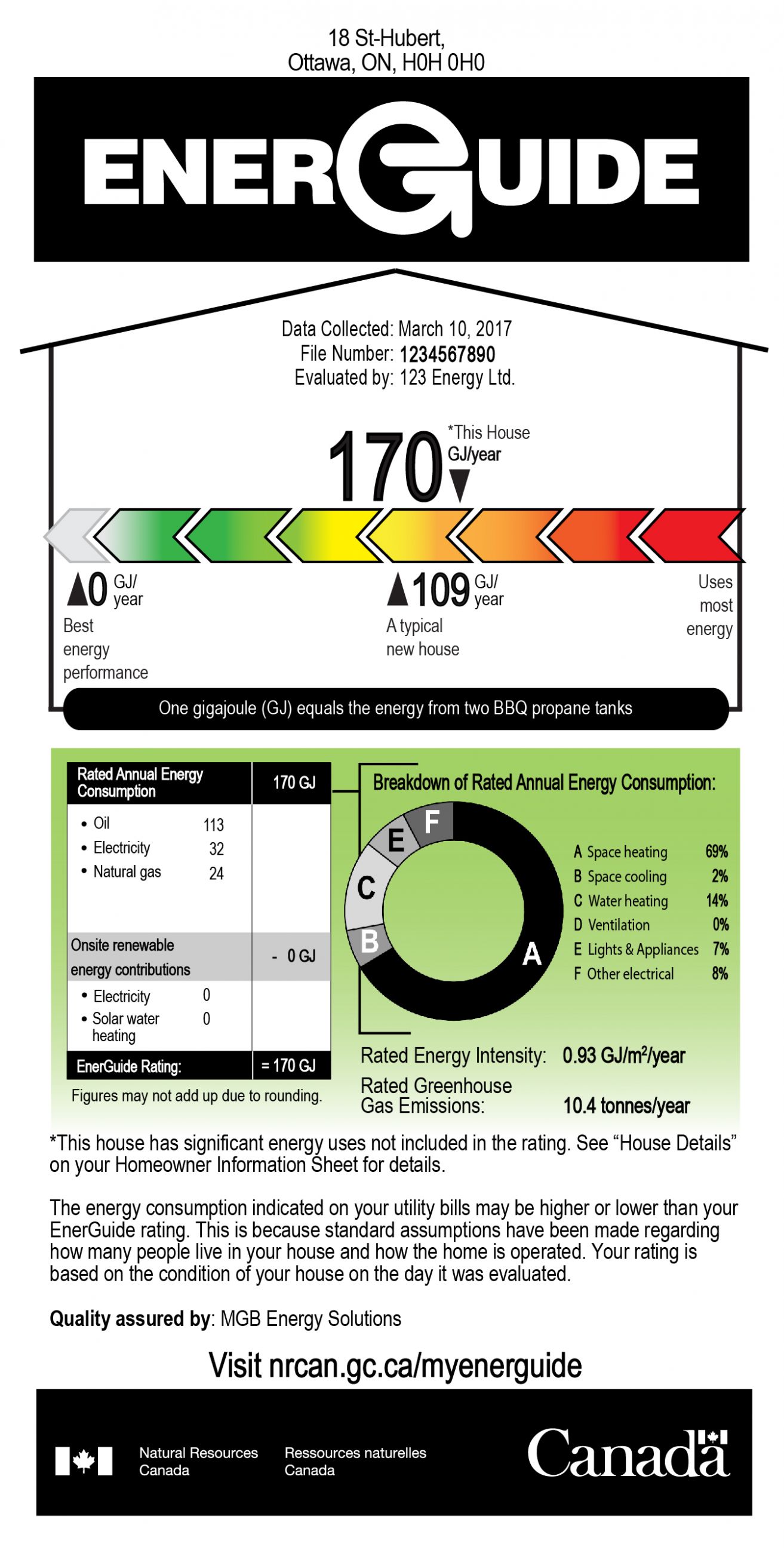How can I make my home more energy-efficient?
Whether you’re planning small fixes or major renovations, consider making energy efficiency upgrades. They will help lower your energy consumption and energy bills and can add value to your home.
Think of your home as a system: all the elements of your house – the building envelope, mechanical systems, indoor and outdoor environment and even the occupants – interact. A change in one area can affect the others. For example, if you seal air leaks, you may need to make changes to your ventilation.
Let the label guide you
When you shop for major appliances and heating and cooling equipment, consult the EnerGuide labels. They show the energy performance rating of a product based on minimum standards set by Canada’s Energy Efficiency Regulations. EnerGuide ratings help consumers comparison shop with confidence.
Learn how to read and use EnerGuide labels.
Explore a searchable list of energy-efficient products.
Get an expert opinion
Schedule an EnerGuide home evaluation with an energy advisor. Have an energy advisor conduct an EnerGuide home evaluation. This will tell you how well your home is performing from an energy efficiency point of view. It can also include recommendations for renovation options for your home – even identify better ways to design and build new homes.
Learn more about EnerGuide energy efficiency home evaluations.
Be wary of high-pressure sales tactics
Homeowners should be aware of door-to-door home-energy marketers that ask or even demand to inspect home heating or cooling equipment. These people may claim to be with a Government of Canada program such as ENERGY STAR®, EnerGuide or ecoENERGY for Renewable Power.
Natural Resources Canada and its affiliated programs never perform or authorize others to perform unsolicited inspections. Learn how to identify and report disreputable marketers.
Managing your home’s energy efficiency
Find out how much energy your home uses now and how you can lower your energy consumption by making smart consumer decisions and developing good habits.
Reduce standby power energy consumption
Even in “standby” or “sleep” mode, many electronic devices draw power 24 hours a day to access networks and run clocks, timers and remote controls. This low-level use can account for 5 to 10% of your electricity bill.
Cut down on this passive power drain with the following tips:
Look for the ENERGY STAR

Ask your cable, satellite or Internet provider about ENERGY STAR certified set-top boxes that can lower your energy consumption up to 25% without affecting your service.
Look for products with the blue-and-white ENERGY STAR logo. It’s a symbol reserved for only the most energy-efficient models in each product class.
Learn more about the ENERGY STAR initiative in Canada.
Use smart power bars
Choose a power bar that has a timer that can disconnect power to devices overnight. Or choose a power bar that has a master socket for your TV and subsockets for peripheral equipment (DVD players, game consoles, etc.). When you turn off the TV, the other devices power down as well.
Give your devices a holiday
Before you leave on vacation, unplug as many appliances and devices as you can. You’ll save energy – and money – for your next getaway.
Unplug rarely-used devices
Pull the plug on the toaster oven, the printer, the guest-room TV and older devices that use AC adapters.
Start today: Make small changes
Follow these tips: Make small changes that add up.
Learn how to keep your home operating efficiently by reading the Natural Resources Canada publication Keeping The Heat In.
Find out more
Page details
- Date modified:
